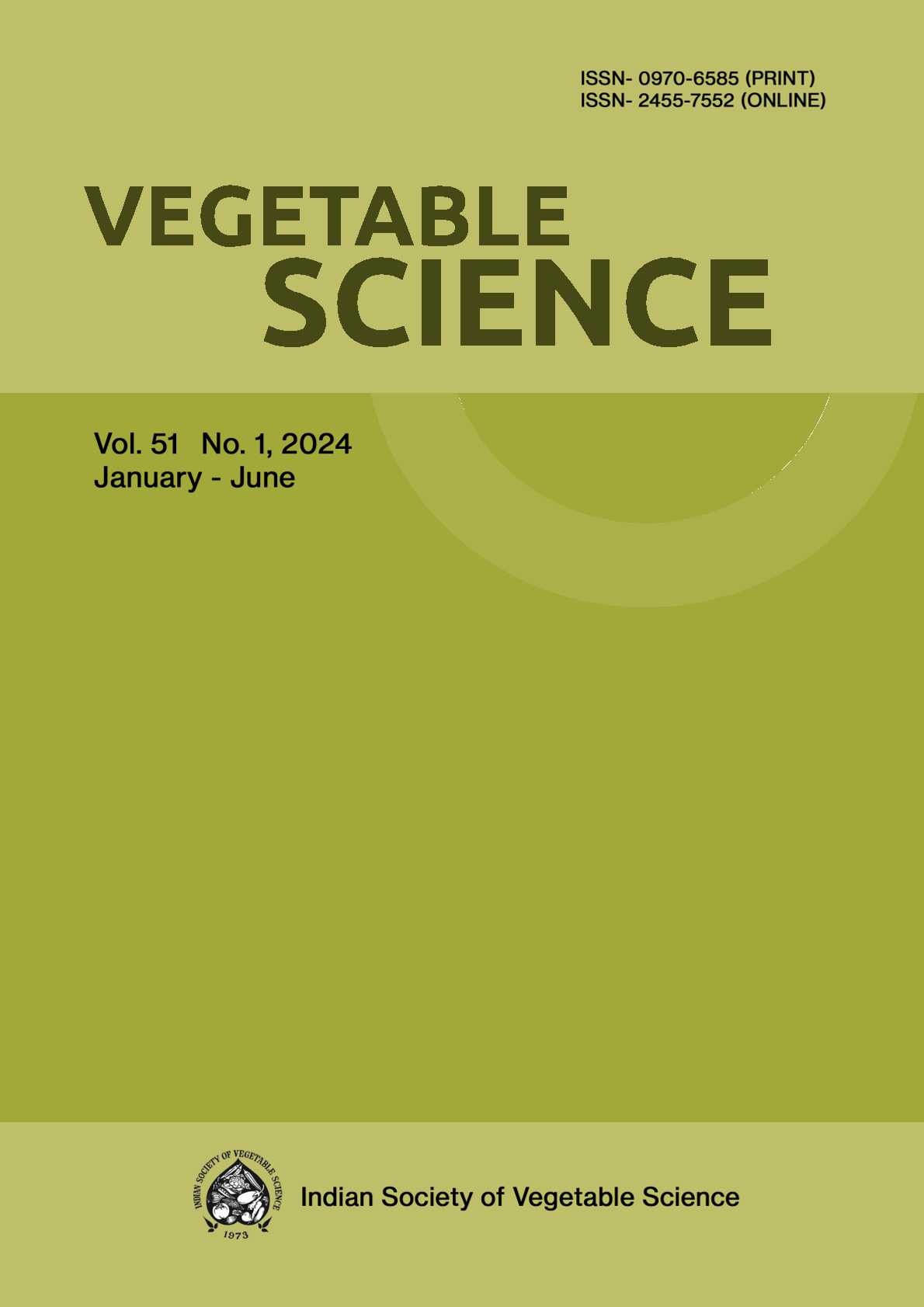Morphological and molecular characterization of Solanum melongena and related species
DOI:
https://doi.org/10.61180/zrbfch14Keywords:
Genetic diversity, PCA, SSR, Solanum speciesAbstract
India is considered as the domestication center for eggplant and its diverse germplasm is notable. In present study, 84 germplasm lines including 79 breeding lines of cultivated eggplant along with five wild species were differentiated on the basis of 21 morphological trait descriptors and 40 simple sequence repeat (SSR) markers. According to principle component analysis (PCA) of morphological traits, 70.33% of the total variation was explained with first 8 PCs. Out of 40 SSR markers, only 19 (50-100%) revealed polymorphism among various cultivated and wild genotypes with a range of 2 and 10 alleles and a mean of 4.9 alleles per marker. On
the basis of PIC values and number of amplified alleles per marker, EEMS28 was the highest polymorphic marker, which was followed by CSM31 and CSM27. Jaccard’s similarity coefficient among genotypes varied from 0.38 -0.98 being the highest between cultivated genotypes and S. torvum. The morphological and SSR data were analyzed individually as well as combined using UPGMA cluster analysis. Morphogenetic divergence within the cultivated eggplant highlighted the possibility of their use in future breeding
programmes. Wild species diverged into separate group on the basis of SSRs data, but merged into small round group of cultivated eggplant morphologically as well as morphogenetically.S. laciniatum and S. aethiopicum were more close to the cultivated eggplant and can be used in introgression breeding.
Downloads
Published
Issue
Section
License

This work is licensed under a Creative Commons Attribution-NonCommercial-NoDerivatives 4.0 International License.






